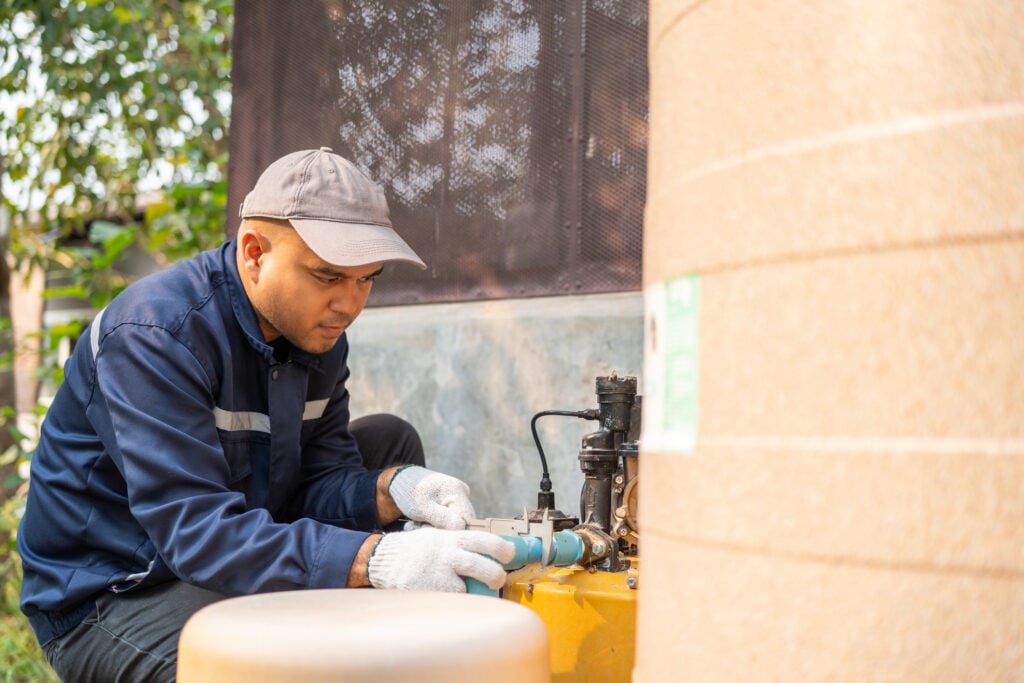Your well is one of your home’s most precious features. To a great degree, your family’s health depends on your home having a constant supply of clean, healthy water. If you are new to owning a well, get familiar with these steps to take to protect your well water quality. If you are not new to owning a well, you might refamiliarize yourself with these vital actions.
Step One: When you are mowing your lawn or trimming grass or weeds, make sure you do not hit the well cap with your equipment. it might not take much impact to loosen or dislodge it. This would enable small animals and insects to enter your well and introduce bacteria, fungi and animal feces into your well. You should also avoid striking the well cap with tools like weed whackers, as this could damage the electrical connections to your pump. (Be sure to inform any landscapers or lawn companies of the location of your well head and the importance of avoiding any damage.)
Step Two: Make frequent trips to your well and check on its well-being. The well cap should look tightly sealed. All parts of the electrical connection should look undamaged and also be tightly sealed.
Step Three: Create a schedule for disinfection. At a minimum, your well should be disinfected every six months. You should also disinfect your well if you notice a change in taste or odor, or if there has been any possible water intrusion into the well. For example, a flood on the property or a malfunctioning septic system. After the disinfection, do a test of your well’s water to ensure that the disinfection was effective.
Step Four: Every time you disinfect, open your well cap and make a visual inspection for spider webs or insect or animal nests. In our well inspections, we have found bee hives, spider webs and even dead mice. So don’t overlook this visual inspection. Animals and insects introduce bacteria, fungi or parasites into well water.
Step Five: Monitor your well and your environment for any possible causes of well contamination. For example: Construction on your property or nearby, including road construction, or new homes or industrial facilities being built. The land near you may not be contaminated, but earth brought in during construction could be contaminated. Try to be alert for any new septic systems being installed near you. Pay attention to any notices of toxic spills in your town. You will still need to test your well water twice a year, as even shifting soil and rock or damaged well casings can introduce contaminants.
BONUS! When you are testing your well water, only use a professional water testing company. Any water testing kit you might get at a home improvement store will not be complete or accurate enough to provide you with peace of mind. Those tests typically check for eight to 20 substances. They also just detect the presence of this limited number of contaminants, without providing quantities. A professional water test lab can look for hundreds of different contaminants and give you quantities for each. That’s how you can truly evaluate the safety or toxicity of your water supply.
Trust the Professionals with Your Water Quality
ETR Laboratories specializes in providing water testing for homeowners, businesses that rely on pure water and city water systems. A professional lab like ETR Laboratories can quickly provide you with accurate well water test results you can trust. The Premium Water test from ETR Laboratories can tell you what you need to know about your water quality in just days. Order now!

